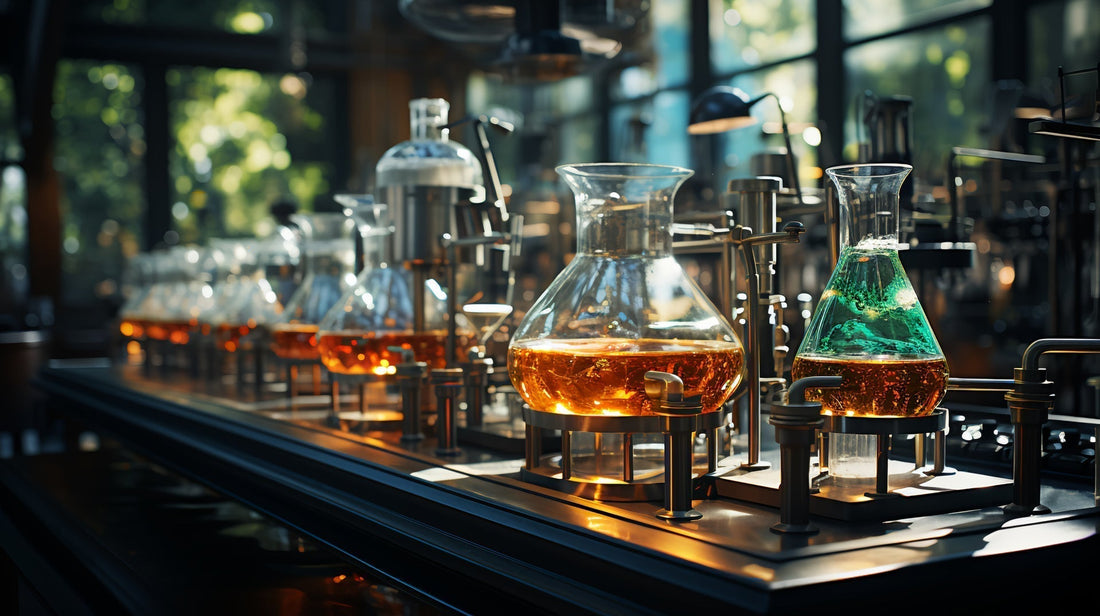
Real floral water
Share
From Herb to Bottle: The Journey of Floral Water
Natural cosmetics lovers adore floral water. But why is that, and what makes this cosmetic ingredient so special?
Floral water, also known as aromatic water or hydrolate, contains no artificial surfactants. Despite this, it delivers an excellent cosmetic effect, thanks to the flavonoids it contains – compounds found in plants that are extremely beneficial for the skin.
An interesting fact is that floral water was one of the beauty and youth secrets as far back as Ancient Egypt. Because of its irreplaceable properties, it continues to be widely used to this day.
What Is Floral Water Used For?
-
Hydrolate is the perfect toner. It helps the skin wake up, providing moisture and nutrients, leaving it radiant and elastic.
-
Floral water has toning and firming properties. It also heals wounds, has anti-inflammatory and antibacterial effects.
-
Strengthens the hair and adds shine.
-
Widely used in culinary applications.
What Does Floral Water Contain?
During production, floral water is enriched with valuable water-soluble bioactive components found in plants. Hydrolate consists of distilled water and water-soluble plant compounds. It also contains trace amounts of essential oils.
In addition, floral water includes:
-
Fatty and isoprenoid acid derivatives
-
Amino acids
-
Aldehydes
-
Esters
-
Phytoncides
-
Flavonoids
-
Alcohols (such as phenylethyl and monoterpene leaf alcohols)
-
Hydrocarbons
… and many other elements.
Floral water does not contain:
-
Tannins
-
Bitter substances
-
Alkaloids
-
Other irritating or astringent components
This makes its effect soft and delicate. Contrary to what many manufacturers claim, hydrolate contains little to no vitamins.
The pH of floral water is close to that of healthy skin (5.0-5.5), generally ranging from 4.5 to 5.5. Researchers describe its homeopathic qualities, and it’s important to note that high-quality hydrolates should be made from fresh plant material. These characteristics make floral water a magical elixir for maintaining healthy skin and hair.
How Is Floral Water Made?
Like most essential oils, hydrolates are produced by steam distillation of plant materials. This process is not limited to flowers; leaves, stems, herbs, and fruits can also be used.
Steam passes through the plant material, extracting essential oils, and carries them through a coil. This results in pure distilled water enriched with esters, condensed from steam. The resulting molecular cocktail contains active aromatic compounds, some of which are identical to those found in essential oils, but in lower concentration.
During distillation:
-
Steam first captures lighter aromatic compounds,
-
Then collects heavier components.
Precision and patience are key to producing rich, concentrated floral water. The process must not be rushed or interrupted, to achieve a homogeneous, pure, and beneficial product with a full spectrum of healing properties.
After distillation, the resulting liquid separates into:
-
Essential oil layer, and
-
Water layer (the hydrolate).
Floral water doesn't always smell like the essential oil, and sometimes it has no scent at all.
Storage Is Crucial
Proper storage is essential to preserve the qualities of floral water. Light, heat, and oxygen exposure can destroy its beneficial properties.
Post-Distillation Transformation
Floral water continues to mature for several weeks after distillation, undergoing subtle chemical processes that fully reveal its benefits. Importantly, no preservatives, alcohol, or water should be added until bottling and packaging.
Only 100% Pure Floral Waters Deliver the Promised Benefits
In industrial settings, floral hydrolate is produced with advanced chemical equipment. Historical evidence shows that even in Ancient Egypt, people used primitive distillation devices—the precursors to today’s alembic stills—to extract floral waters and aromatic essences.
The History of Distillation
As early as the 3rd century, Zosimos of Panopolis, a Greek philosopher, alchemist, and one of the founders of modern chemistry, documented distillation equipment based on Egyptian architecture.
The Role of Copper in Traditional Distillation
Classic distillation vessels are made of copper, which absorbs impurities and ensures even heating.
The alquitara device, used for producing both essential oils and hydrolates, is a simplified version of the alembic still. It is compact, lacks a drainage tube, and has vertically aligned components.
Storage of Hydrolates
Many people wonder why floral water lasts so long.
Why It Lasts
-
Hydrolate is a sterile product, and using sterilized bottles extends its shelf life.
-
Thanks to its composition and production method, hydrolates can last long without preservatives.
Natural Preservation
Floral water contains bioactive substances and antioxidants with antimicrobial properties, such as:
-
Acids
-
Aldehydes
-
Esters
-
Phytoncides
-
Flavonoids
-
Phenylethyl and leaf alcohols
Even trace essential oils contribute to its preservative qualities.
Essential oil-rich plants like rose, lavender, lemon balm, mint, juniper, rosemary, thyme, and bay leaf can retain freshness for 1 to 1.5 years without preservatives.
Shelf Life Indicators
Signs that your floral water may have expired:
-
High pH level (above 6) – check with pharmacy test strips.
-
Change in scent.
-
Color change or cloudiness.
-
Sediment formation.
Extending Shelf Life
You can extend floral water’s shelf life by adding alcohol—especially if you’re using it for oily skin.
One of the safest preservatives is potassium sorbate, found naturally in fruits like rowan berries. It is globally recognized as safe, and the body fully breaks it down without leaving residues.
Popular Raw Materials for Floral Water
Almost every part of the plant—from roots to blossoms—can be used to make floral water.
Popular sources include:
-
Rose
-
Lavender
-
Geranium
-
Jasmine
-
Mint
-
Lemon balm
-
Orange
-
Lemon
-
Thyme
-
Parsley
-
Calendula
-
Sage
-
Linden
-
Juniper
-
Rosemary
-
Ginger
-
Carrot
